Contrary to Governor Kristi Noem’s persistent lie, South Dakota does not have the “strongest economy in America“. We don’t even have the most dynamic economy in America. According to the Economic Innovation Group’s Index of State Dynamism,
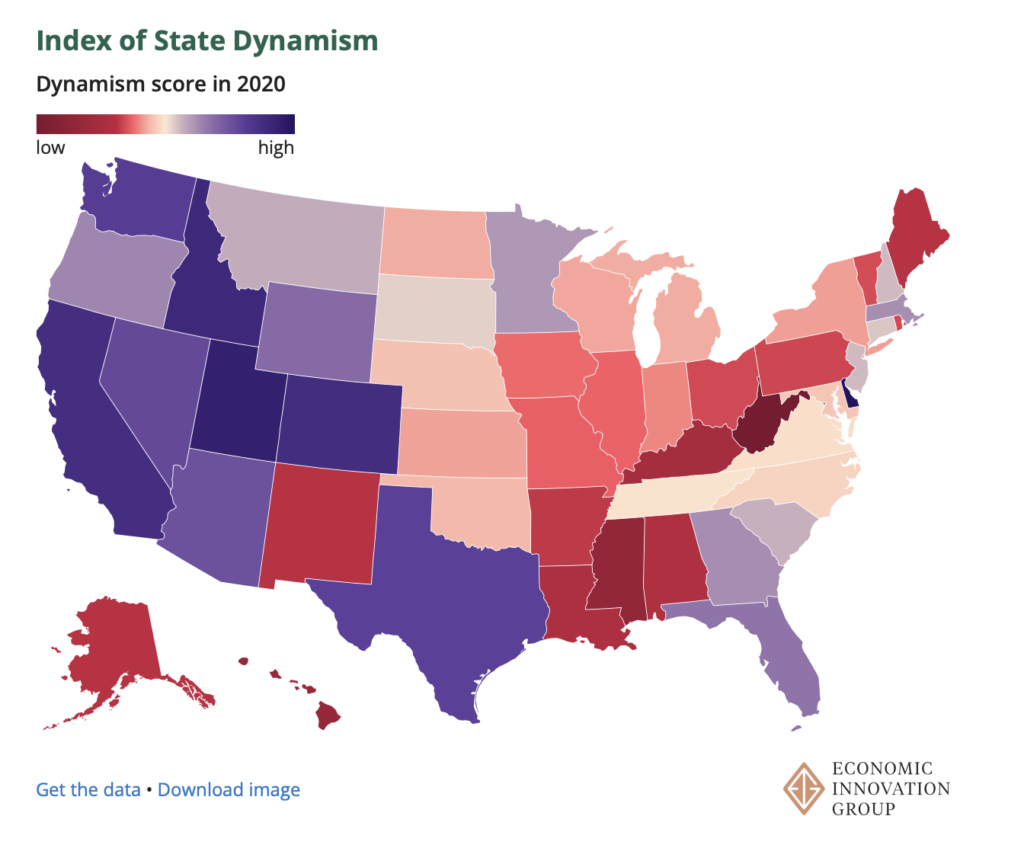
On a scale from a high of 47.7 in Delaware to a low of 11.1 in West Virginia, South Dakota scored 31.2 for economic dynamism in 2020, ranking 22nd in the nation. Nebraska, North Dakota, and Iowa scored lower, but Montana, Wyoming, and those socialists in Minnesota scored higher.
None of our neighbors make the top 10:
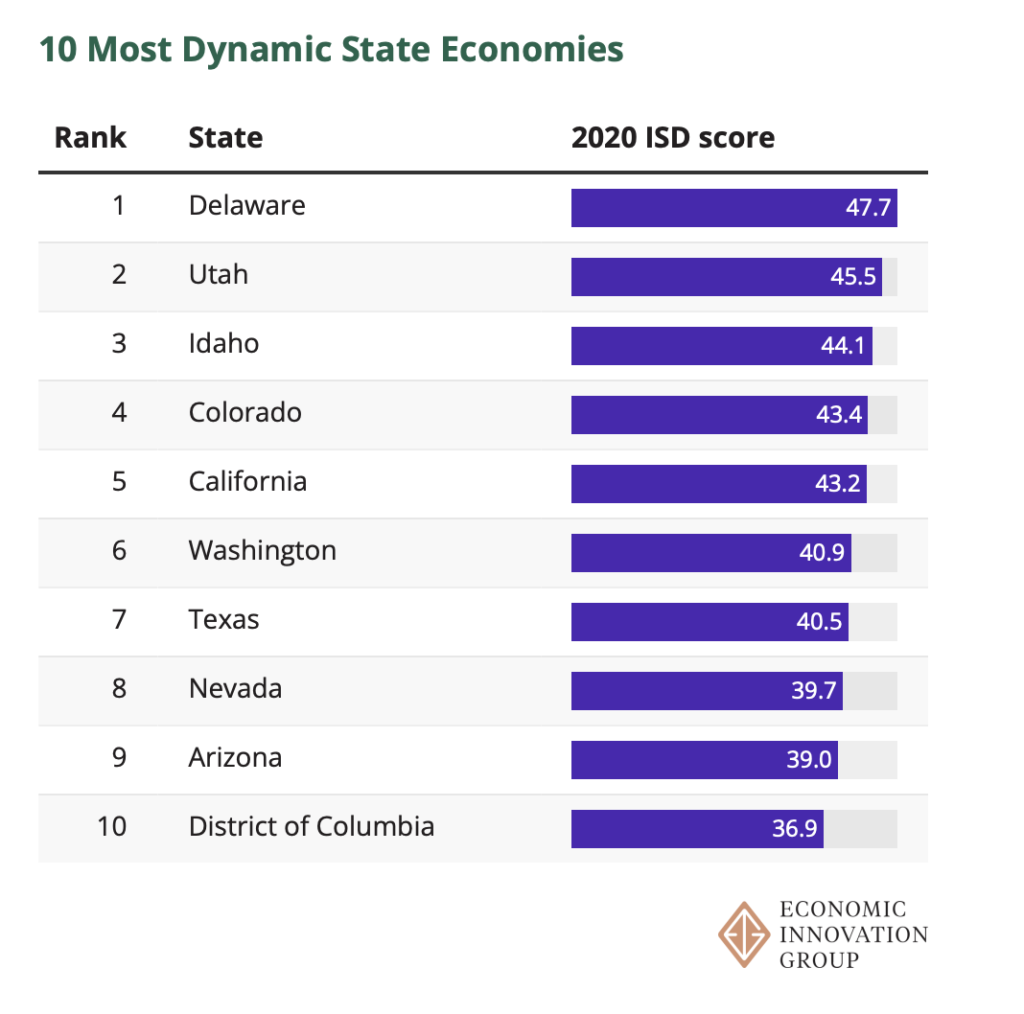
…or the worst 10:
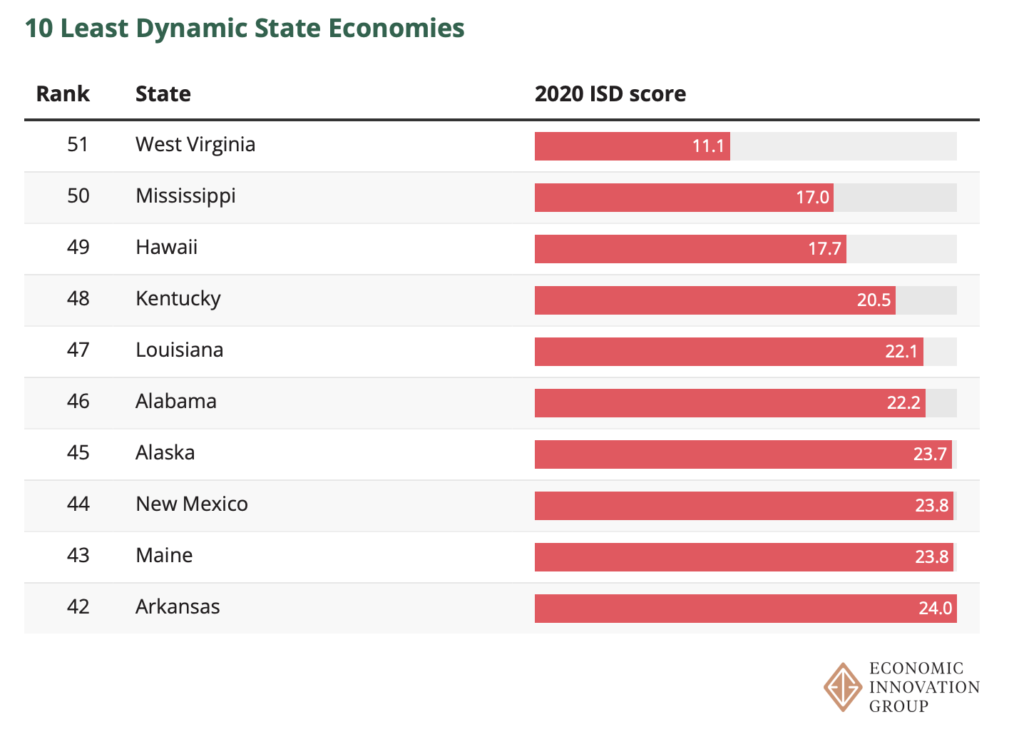
South Dakota’s just kind of stuck in the middle.
EIG figures eight factors into its dynamism scores:
- Core startup rate, measuring new firm launches across sectors, emphasizing diverse business opportunities.
- Share of workers at firms less than five years old, which tend to innovate more and grow faster than older firms.
- Growth in total firms, which signals more opportunity and more competition.
- Patents per 1,000 residents, which indicates creativity and research producing results.
- Housing permits per 1,000 residents, indicating that an economy offers enough opportunity to encourage talent to come, stay, and invest in the community.
- Reallocation rate, measuring how much workers change jobs. Churn may be bad within a firm, but across the economy, job-switching spreads ideas and innovation, signals competitive wages, and shows that there are fewer barriers keeping workers from seeking jobs that fit better with their talents and interests and thus at which workers will be happier and more productive.
- Labor force participation rate, showing that the economy offers lots of opportunities and attracts workers, especially young workers, to seize those opportunities.
- Migration rate, because adding people by itself means there will be more economic opportunity.
EIG says South Dakota strongest metric is housing permits, which have outpaced the national average for most of the last three decades. Out labor force participation rate also consistently beats the national average. But our patents and core startup rates are consistently below the national averages.
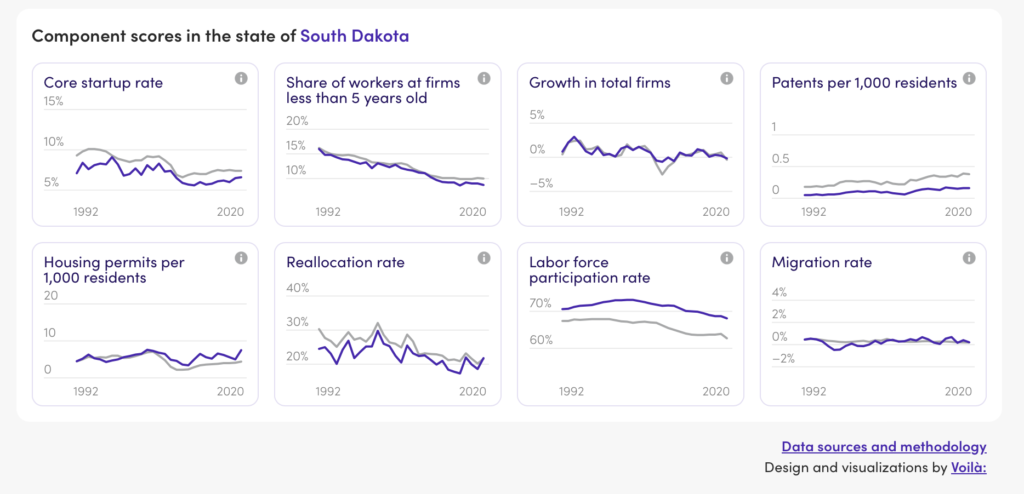
Minnesota’s strongest metric is patents, currently running at double the national rate. Minnesota also has a consistently strong labor force participation rate. The metrics where Minnesota is consistently and notably weaker than the national average are share of workers at young firms and reallocation rate.
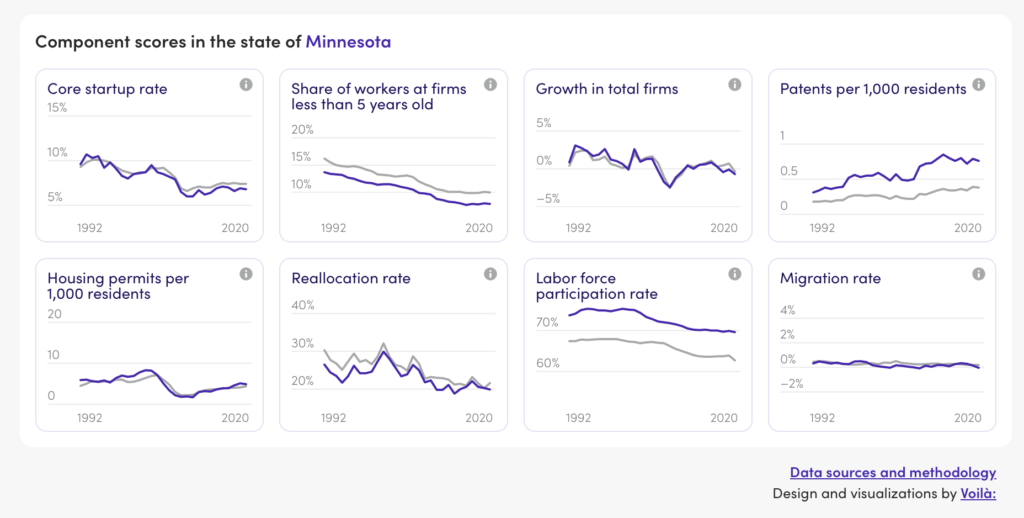
South Dakota’s average economic dynamism score during Noem’s first two years in office, 2019 and 2020, was 30.3, tying the average score during Dennis Daugaard’s eight years of governing. As in the rest of the country, South Dakota’s economic dynamism was much higher 20–30 years ago, so South Dakota’s highest average dynamism scores, averaging 38.7 under the second Janklow Administration, only produced an average national ranking of 34. South Dakota’s dynamism didn’t slide as fast as the rest of the nation’s in the Great Recession, so the 37.0 average dynamism score during Marion Michael Rounds’s gubernatoriate managed to push South Dakota’s average rank up to 21, the best seen under any of the four recent governors.
| Governor | average dynamism score | average dynamism rank |
| Janklow (1995–2002) | 38.7 | 34 |
| Rounds (2003–2010) | 37.0 | 21 |
| Daugaard (2011–2018) | 30.3 | 25 |
| Noem (2019–2020) | 30.3 | 26 |
It takes strength to be dynamic, to shake and bake. South Dakota’s middling dynamism, led by people building houses and dragged down by a lack of inventiveness, is more evidence that “strongest economy in the nation!” is false advertising.
Good for South Dakota. Being in the middle is good.
Governor Noem has done no better than her predecessors though, like Joe Biden, she has governed during difficult times. One deficit South Dakota has is an absence of strong, research oriented Universities.
My adoptive state of New Mexico has been stuck near the bottom of metrics like these mostly for the reasons South Dakota is: the Fourth World doesn’t buy into the American myth. But we’re making headway with free meals for school kids and appropriating oil and gas revenue to create energy independence.
https://www.brookings.edu/blog/how-we-rise/2023/04/12/new-mexicos-early-childhood-education-amendment-is-a-model-for-economic-mobility-other-states-should-consider/
Yes, but who wants to live in California, Minnesota or Delaware. Not me!
Did Lar put those graphs together for you? They are incorrect.
As a South Dakota resident, I can say Noem has not helped its residents. Housing is ridiculously high but the wages haven’t increased. Out of state residents are encouraged to move here, offering $50k to $100k over the asking price of houses for sale, not giving South Dakota residents the ability to purchase a house, especially first time home owners. Noem cares only for the affluent households and not the average citizen. The jobs that are available don’t pay enough to sustain a decent living for an average family. Many people have cut their spending due to economic hardship. Noem loves to pat herself on the back but in reality she cares very little for South Dakota residents unless you earn a six figure salary.
When the “average age” of folks moving to Rapid City is 65, then one knows that one is in trouble . . . unless one’s growth industry is assisted living facilities.
Canada’s immigration system almost never allows immigrants 65 years old or older because retirees contribute little to an economy and are mostly a drain on an economy.
The question isn’t whether you want to live in any particular state. The stats address the point that whoever is choosing to live in those states is producing more economic action than the folks choosing to live in South Dakota.
So the answer to your question appears to be, statistically, more innovators and entrepreneurial movers and shakers.